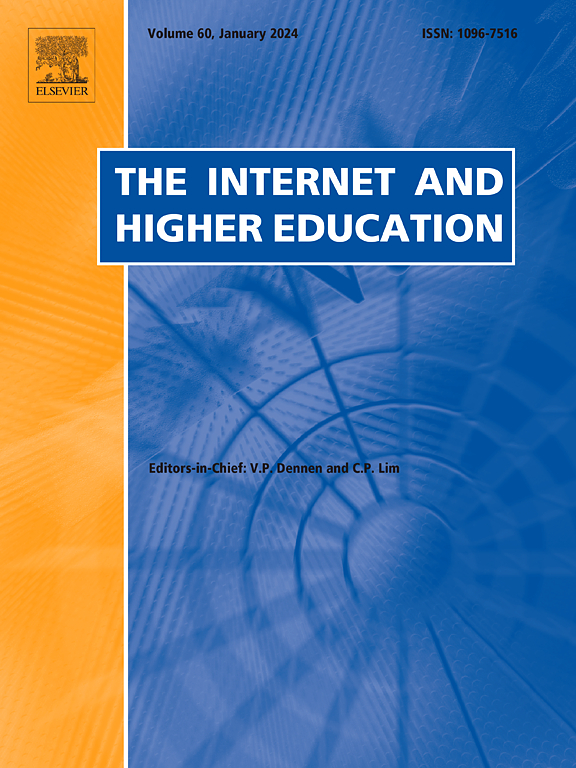An active instructional approach based on the SAMR framework: Integrating AIGC into undergraduate freshmen learning
IF 6.8
1区 教育学
Q1 EDUCATION & EDUCATIONAL RESEARCH
引用次数: 0
Abstract
The question of how to use artificial intelligence generated content (AIGC) properly to enhance learning among college students is a key concern for contemporary educators. Although previous studies have discussed the influence of AIGC on college teaching and student learning and its functions in this context, there remains a lack of discussions regarding ways of guiding students' use of AIGC and studies on the specific topic of helping college freshmen use AIGC properly. Based on the substitution, augmentation, modification and redefinition (SAMR) model, this study develops a progressively active teaching framework that integrates AIGC into learning. This framework is used to design learning activities for general education courses targeting freshmen. This exploratory study was conducted in the context of a 16-week course. During the teaching process, AIGC interaction log data and AIGC experience records were collected from students, following which data processing was conducted using the discourse analysis, quantitative statistical analysis, and epistemic network analysis (ENA) methods to obtain the ultimate results of this study: (1) A combination of active teaching with the SAMR model can improve the quality of interactions between students and AIGC; (2) teaching strategies rooted in active learning can enhance students' ability to use AIGC; and (3) improvements in students' technical skills strengthen the quality of their interactions with AIGC. This study makes novel contributions to the literature on active learning strategies for teachers and curriculum designers, and it offers practical guidance for educational practitioners and college students regarding the integration of AI technology into both teaching and learning.
基于SAMR框架的主动教学方法:将AIGC融入本科新生学习
如何正确地利用人工智能生成内容(AIGC)来促进大学生的学习,是当代教育工作者关注的一个关键问题。虽然已有研究探讨了AIGC对大学教学和学生学习的影响及其在这一背景下的作用,但对于如何引导学生使用AIGC,以及如何帮助大学新生正确使用AIGC这一具体课题的研究仍然缺乏。本研究以替代、增强、修正和重新定义(SAMR)模式为基础,开发了一个将AIGC融入学习的渐进式主动教学框架。该框架用于设计面向新生的通识教育课程的学习活动。这项探索性研究是在为期16周的课程背景下进行的。在教学过程中,收集学生的AIGC互动日志数据和AIGC体验记录,运用语篇分析、定量统计分析和认知网络分析(ENA)等方法对数据进行处理,得到本研究的最终结果:(1)主动教学与SAMR模型相结合,可以提高学生与AIGC互动的质量;(2)基于主动学习的教学策略可以提高学生使用AIGC的能力;(3)学生技术技能的提高加强了他们与AIGC互动的质量。本研究为教师和课程设计者的主动学习策略文献做出了新颖的贡献,并为教育从业者和大学生提供了将人工智能技术融入教与学的实践指导。
本文章由计算机程序翻译,如有差异,请以英文原文为准。
求助全文
约1分钟内获得全文
求助全文
来源期刊

Internet and Higher Education
EDUCATION & EDUCATIONAL RESEARCH-
CiteScore
19.30
自引率
4.70%
发文量
30
审稿时长
40 days
期刊介绍:
The Internet and Higher Education is a quarterly peer-reviewed journal focused on contemporary issues and future trends in online learning, teaching, and administration within post-secondary education. It welcomes contributions from diverse academic disciplines worldwide and provides a platform for theory papers, research studies, critical essays, editorials, reviews, case studies, and social commentary.
 求助内容:
求助内容: 应助结果提醒方式:
应助结果提醒方式:


